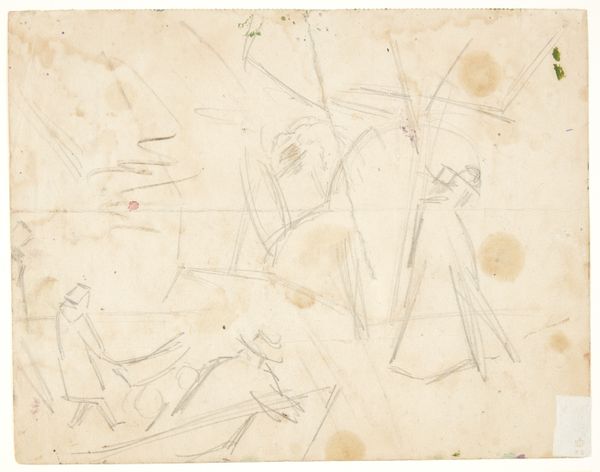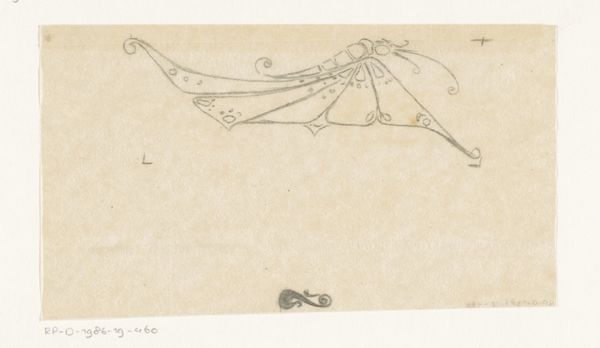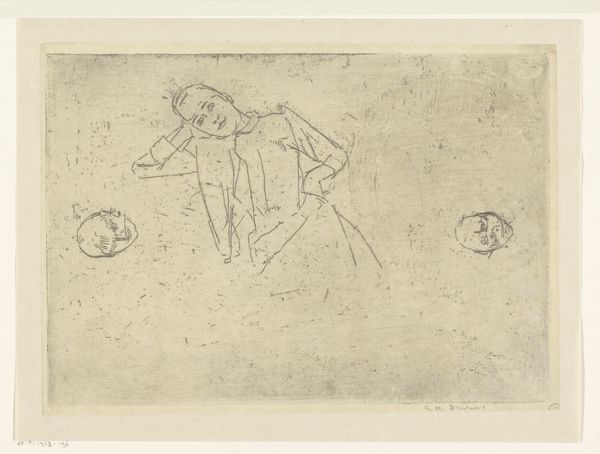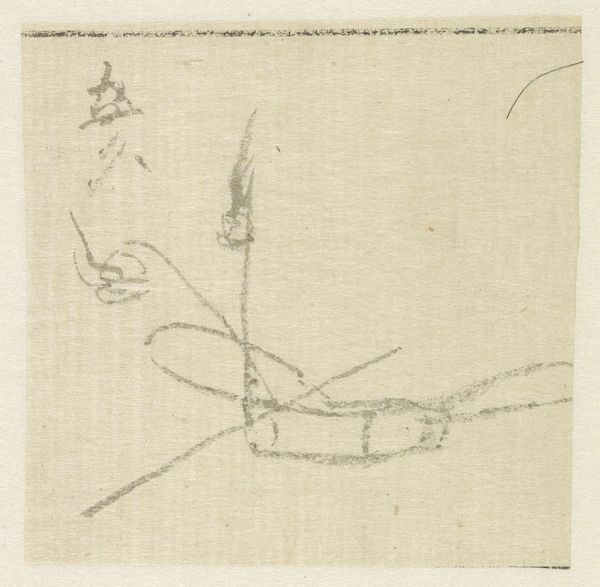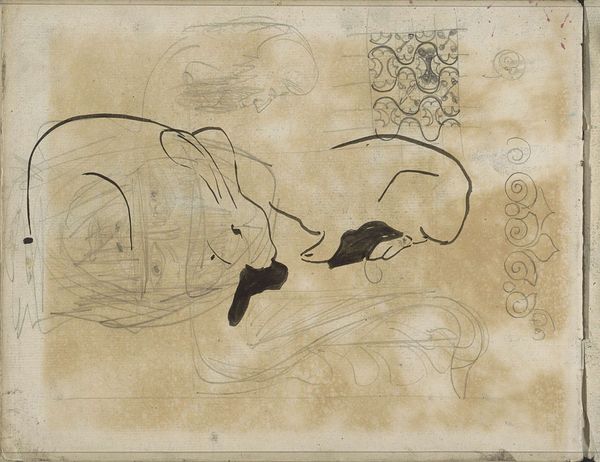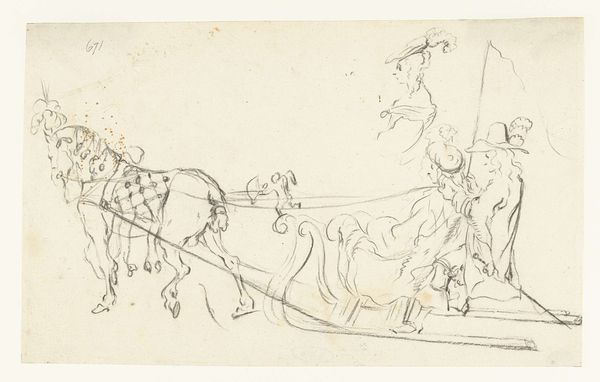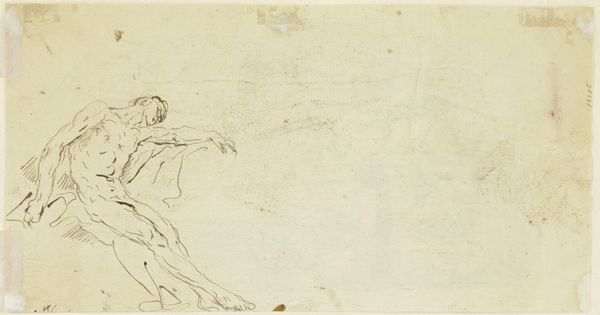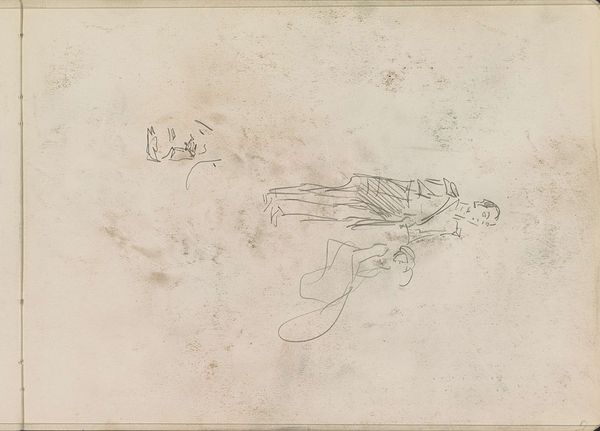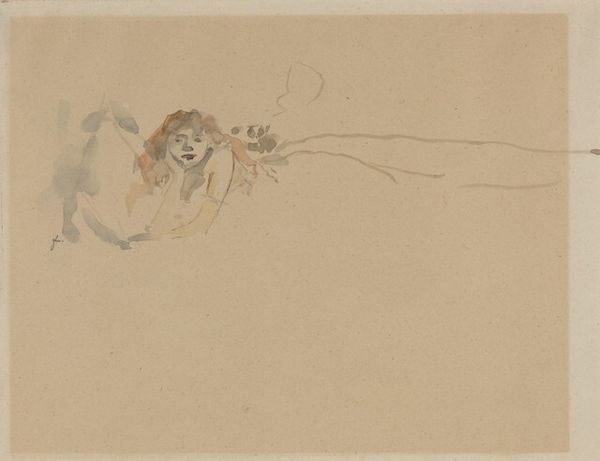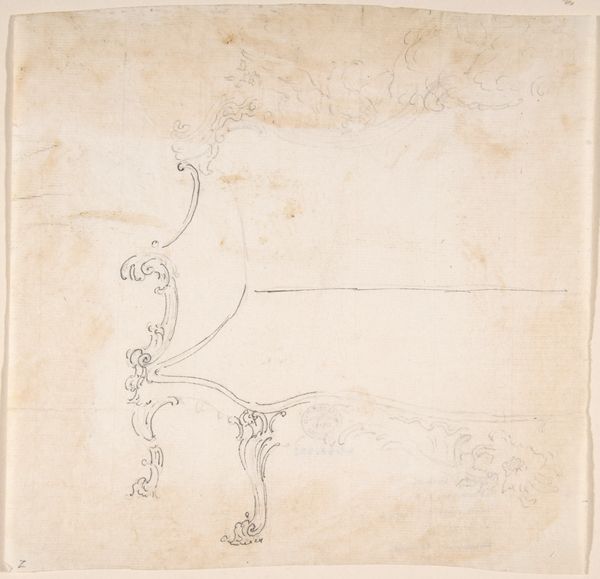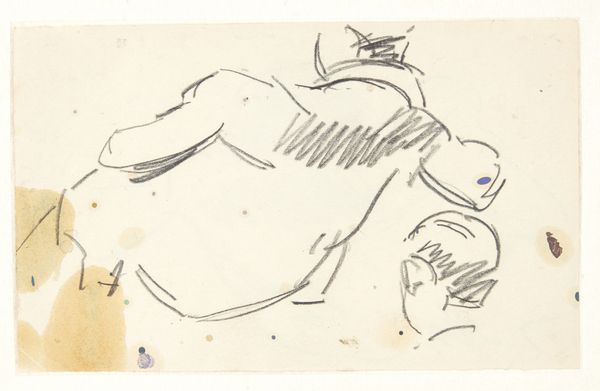
mixed-media, collage
#
mixed-media
#
collage
#
text
#
art-informel
#
abstraction
#
line
#
italian-renaissance
Copyright: Alberto Burri,Fair Use
Editor: This is "Cover for 17 variazioni su temi proposti per una pura ideologia fonetica" by Alberto Burri, made in 1955. It’s a mixed-media collage, quite delicate. There are linear elements, areas of red and gold, and other abstracted shapes, almost like a map or some kind of… circuit diagram? What draws your eye when you look at this? Curator: I immediately notice the apparent simplicity in its production: line, minimal colour, basic shapes. But it invites deeper consideration of materiality and the making process. Look at how Burri challenges conventional artmaking by using accessible media; here he explores form and texture, raising questions about value in artistic production. It prompts, "what are the circumstances of this creation? What resources were accessible, or intentionally employed?" Editor: That's interesting! It really emphasizes that art doesn't have to be about expensive materials. The labour involved in even seemingly simple work counts for something. The care in these lines, or how this metallic material seems stitched or attached… I wonder, is there some economic or cultural message connected to material limitations here? Curator: Exactly! Considering Burri was working in post-war Italy, grappling with economic realities and material scarcity likely influenced the artistic process and the choices he made. How might this context have spurred artistic ingenuity or resourceful methods when typical resources are scarce? Perhaps that accounts for this striking juxtaposition of fragility and intentional rawness of line and the sheen of metallic inclusion. What feelings might have been prompted in the original audiences of his art given their daily circumstances? Editor: So, looking at art through the lens of materials and resources reveals not just the artist's intentions, but also a wider social context, right? Curator: Precisely. By shifting our focus to material culture, we expose artistic output as directly affected by and connected to our human existence. The production's method becomes as much a focal point as representation itself. Editor: That’s a cool concept. I think I appreciate the artist's decisions much more knowing that context. Thanks!
Comments
No comments
Be the first to comment and join the conversation on the ultimate creative platform.
